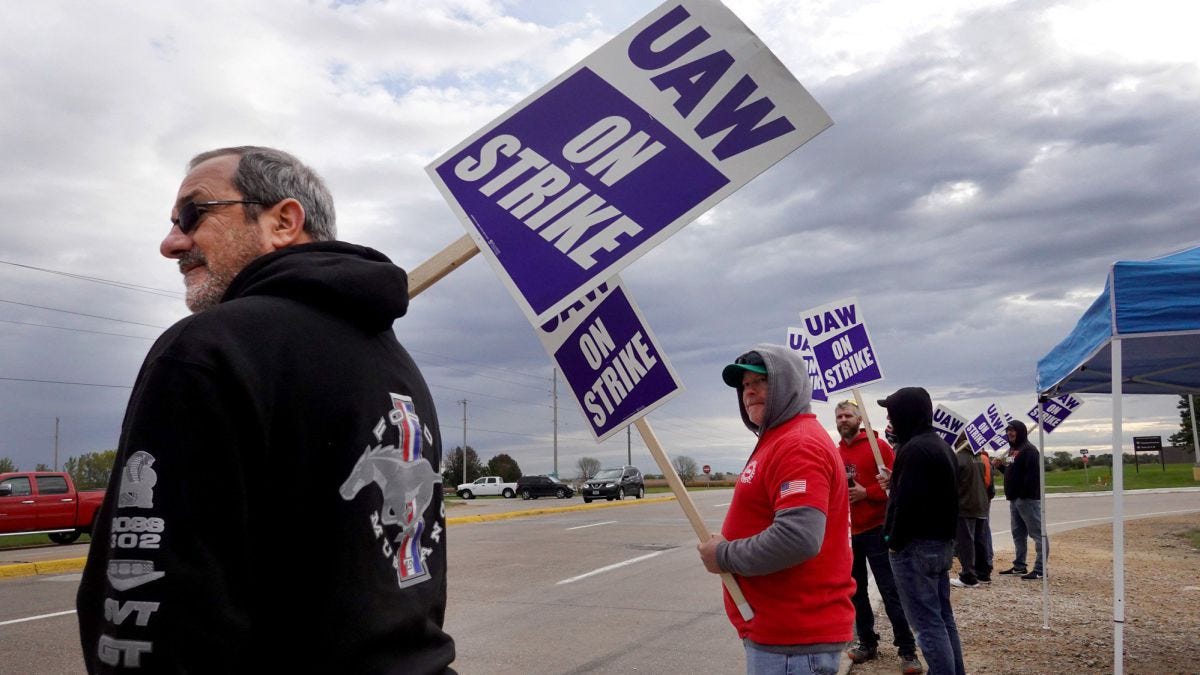A crucial lesson of the Great Resignation
The current moment finally has us talking about one of the most important and overlooked phenomena in economics... and ultimately points to the dire need for a more holistic approach.

The economy is in turmoil. Supply chains are grinding to a halt and inflation is driving up prices. On top of that, workers are quitting their jobs (or still refusing to go back to work) in what is now being called the “Great Resignation.” No one is quite sure where things will end up or how the new normal might look.
But when it comes to everyday workers, some see a very bright future. Businesses are desperate to hire new workers, as well as keep the workers they have, so employees suddenly find themselves with all the bargaining power. Higher wages, signing bonuses (or bonuses for not quitting), greater control over when and where one works (from home or the office) — all of these are suddenly on the table, and employees are busy trying to figure out the kind of work-life balance they really want.


But many of these gains will not last in the long-run. They will be eaten away unless we learn certain lessons from the present moment, and especially from one of the most important and overlooked phenomena in economics: the “wage-price spiral.” It’s a concept that’s generally only mentioned at times like the present, when there are concerns about inflation, but it actually has a much broader and deeper significance.
The wage-price spiral points to the simple fact that when wages go up, prices go up as well. The reason is obvious: the price of any commodity depends on the costs of producing it, and one of these is the cost of labor. So if all the employees at a bakery go on strike and receive higher wages, then the bread the bakery sells will become more expensive. That is, unless the bakery cuts costs elsewhere.
This is crucial to understand, not just in this moment of global economic reckoning, but at all times. Why? Because the wage-price spiral is not just some temporary danger that can lead to run-away inflation (when wages go up, then prices go up, so then wages go up again… and the whole thing can spiral out of control). In reality, it’s the basic, everyday relationship of incomes and prices, and the fact that we don’t see it means that many of our economic policies and initiatives are ultimately fruitless.
For instance, the central pillar in the ongoing crusade for economic justice is the fight for higher wages. This is the primary pursuit of unions. But just raising wages doesn’t actually work in the long run. The reason we think it works is because it does help those employees who receive the pay bump, temporarily, but almost always at the expense of other workers.
If we go back to the bakery example: After going on strike and getting a wage hike, all the employees are sitting pretty, but the customers suffer the brunt of higher prices. “Well,” you might say, “then they should also demand higher wages!” OK, but then watch what happens. When they demand and receive higher wages, then the prices of their goods and services also go up. Sounds great. But now if we imagine this process playing itself out successfully in a small, closed economy — say in a rural village that doesn’t import anything — than we can easily see that, perhaps a year later, everyone in the village is making more money but the prices of their goods have also gone up and, because of this, no real gains have been made. Now a villager has $50 instead of $25 in their pocket, but the price of what they need also has risen from $25 to $50, so there’s no actual increase in purchasing power. All the wage hikes amount to nothing.
This phenomenon is happening all the time but its effects are spread out over the whole economy, so we never notice it. Instead, we spend all our energy fighting for higher wages and never recognize the larger futility of it.
The lesson of the wage-price spiral is clear: everything in the economy is tied together — we can’t just “fix” one thing without knowing how it affects everything else. It simply doesn’t work.
Instead, we have to recognize the underlying reality that, at any given time, there is a specific number of goods and a specific number of people wanting those goods. If we suddenly print up twice as much money and give it to everyone, it doesn’t change anything — it doesn’t magically create twice as many commodities. There’s still just the same pool of goods and the same pool of people. The only actual change will be that the goods will become twice as expensive.
So we have to think everything in relationship. When the bakery raises both wages and prices, their employees can afford more goods, but its effects ripple through the community and everyone else takes a hit. Now the bakers can take more from the common pool, but there’s correspondingly less for the brewer and butcher. Because the reality is: Whenever we take more from the pie, there’s less for everyone else.
It is this deeper interrelatedness that our current economic moment makes visible. The Great Resignation is driving up wages but it’s also driving up prices in a way that’s making economists fret, so the wage-price spiral is finally starting to be talked about in mainstream news. Of course it’s only being discussed in relation to the temporary danger it poses for inflation, but nonetheless, it’s an opportunity for all of us — for you and me — to recognize its deeper significance: that our whole approach to economics is short-sighted and ineffective, and that the time has come for a new one.
So what can we do about it? Am I saying that we should never raise people’s income? Not at all — everyone should be able to earn what they need to live a dignified life, and to do this we’ll always need to balance incomes and prices. But we should be doing so consciously, holistically — it should always be in relation to the rest of the economy. We shouldn’t be fighting for one group to get a higher wage without seeing how it affects others. It’s simply not just. We have to ask instead: If I’m demanding more, then who will get less? Who’s scale will fall as mine is raised?
A possible first step is to lower a business’ other costs, specifically executive pay. If executive pay and employee pay are tied together (what’s called “internal equity,” and was the norm up until about the 1970s) then outer prices won’t rise as quickly. Because the fact is, if workers receive more, someone has to receive less. If it doesn’t happen within the business itself, then the loss is externalized, passed off to customers. But we shouldn’t fool ourselves: it will then be those already struggling, other workers, who will be hit the hardest.
So if we’re fighting to raise wages without simultaneously looking to see how it affects others, we’re being irresponsible. We’re harming people.
This is, of course, no easy balancing act. We’re so used to thinking things in isolation, we don’t see the strings that tie everything together. But this is the lesson we can learn from the Great Resignation. If we can see how higher wages look great but hurt other workers, and how the wage-price spiral actually nullifies all those gains in the long run, then we can see that a different type of economy is needed. An economy where we can balance these things. An economy where we can make sure everyone has what they need to live a dignified life.
But this kind of balancing will require conscious coordination. The “invisible hand” simply can’t do it. Blind competition won’t raise all boats. The law of supply and demand simply falls apart when people don’t have the money they need to make their demands heard.
Coordinating the economy might sound like communism to some, but think instead about every single business you’ve ever set foot in. There isn’t a company on the earth that leaves its operations to an “invisible hand.” Every single one of them strives to consciously guide its activities and to work cooperatively within its walls. Now we need to do this with the whole economy.
There aren’t too many companies that have yet turned their backs on blind competition and figured out how to cooperate with other companies instead. Certainly the most successful of these has been the Mondragon Corporation in northern Spain. Starting with its first company in 1957, Mondragon has now grown into a “federation” of over 250 worker-owned companies that collectively employ over 70,000 people. These companies have banded together and created their own banks, schools, hospitals, and grocery stores in order to make sure that all their workers have what they need. It’s not a perfect initiative, but it is by far the most successful and daring of its kind. (If you want to know more, there was a great BBC documentary about it in the 1980s, and here’s a more recent short video (6 min) that gives a nice overview.)
In an economy where businesses work together — where they associate with one another in order to meet everyone’s needs in the most efficient way possible — work would be seen for what it is, service, and not as an opportunity to pursue one’s own self-interest. It’s this kind of work that truly calls to people, that keeps people wanting to return to work. Because people don’t quit in droves when they’re being treated with respect and when their talents are properly employed. People don’t quit in droves when they can see that they’re needed — that they’re contributing something of value to the pool of goods and services, that they’re helping bake the pie that ultimately feeds us all.





"Just raising wages..." is in context of forty years at least of having actual wages (what you can actually buy) at the lower levels reduced (and unions suppressed). That plus offshoring jobs has produced a destruction of the US middle class, with corresponding political consequences. Not having any national economic policy is also desperately desired by top corporate leaders and billionaires who are weaned on an opportunistic, zero-sum worldview.